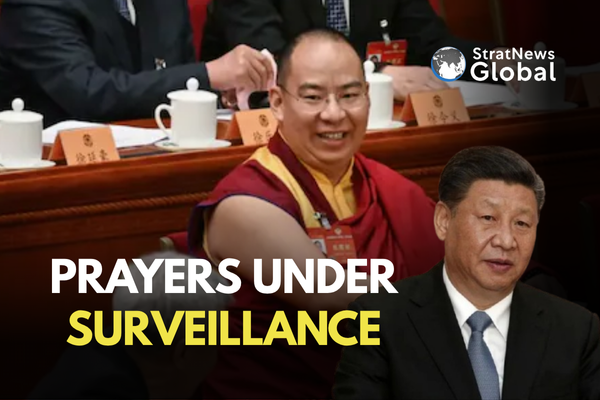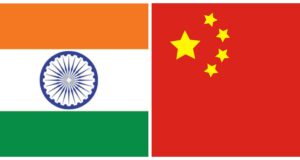As President Xi Jinping carries out a sweeping purge of top generals in one of the largest shake-ups in the People’s Liberation Army (PLA) in decades, Chinese authorities are also tightening control over the religious sphere in Tibet. Thousands of Tibetans were reportedly compelled to attend a Kalachakra initiation led by the Beijing-appointed Panchen Lama.
According to a report by Phayul, Chinese authorities forced thousands of monks, nuns, laypeople, and senior lamas including the 7th Gunthang Rinpoche, the Sakya abbot, and the Sera abbot to attend the four-day Kalachakra ceremony held from October 9 to 12 at the Kyi-kyi Nakha site of Tashi Lhunpo Monastery in Shigatse, the traditional seat of the Panchen Lamas.
The event, led by Gyaltsen Norbu—the Chinese-appointed Panchen Lama often referred to by Tibetans as the “fake Panchen” was part of a state-organised initiative intended to project religious harmony under official supervision. Reports said attendance was mandatory for many.
This is not the first time authorities have directed Tibetans to attend ceremonies led by Norbu. In 2016, a similar Kalachakra near the same monastery drew controversy amid claims that Tibetans were coerced or paid to participate.
Rinzin Namgyal, a Tibetan scholar and Research Associate at the Foundation for Non-Violent Alternatives (FNVA), told StratNews Global that the recent events reveal “the two faces of religion under Chinese rule.”
“From October 10–12, the Chinese-appointed Panchen Lama led a state-organised Kalachakra meant to show stability and control, but many Tibetans were forced to attend,” he said. “From October 9–13, an independent ceremony in Ngawa by Alak Goru Rinpoche of Kirti Monastery showed genuine devotion and loyalty to traditional Buddhist authority. The presence of senior monks at the state event came more from fear than faith.”
Security during the event was tight, with heavy police and military presence. Officers disguised as medical staff were seen managing the crowds, according to reports. Observers said the arrangements reflected Beijing’s effort to maintain close control over major religious gatherings.
Dr. Shivam Bahuguna, Assistant Professor at the Hamdard Institute of International Studies, Jamia Hamdard University, told StratNews Global that such ceremonies are “part of China’s ongoing attempts to delegitimise the Dalai Lama by promoting a state-appointed Panchen Lama.” He said the initiative aligns with China’s broader “policy of Sinicisation of Tibetan Buddhism.”
Bhutan-based Khyentse Rinpoche’s presence at the Shigatse ceremony also drew notice.
Rinzin Namgyal said such participation “helps the Chinese state project an image of religious normalcy while reinforcing loyalty to the Communist Party.” He added that the Panchen Lama’s repeated calls for “gratitude, unity, and allegiance to the motherland” reflected political messaging rather than spiritual guidance.
A similar pattern was seen at the 7th Gungthang Rinpoche’s Kalachakra in 2023. In contrast, Kalachakra teachings by the Dalai Lama such as those held in India in 2012 and Ladakh in 2014 have been condemned by Chinese state media, and returning Tibetans were reportedly detained or subjected to “re-education” programmes.
The Dalai Lama-recognised 11th Panchen Lama, Gendun Choekyi Nyima, has remained missing since 1995, with Chinese authorities providing no verifiable information about his location or wellbeing for nearly three decades.
Research Associate at StratNewsGlobal, A keen observer of #China and Foreign Affairs. Writer, Weibo Trends, Analyst.
Twitter: @resham_sng







